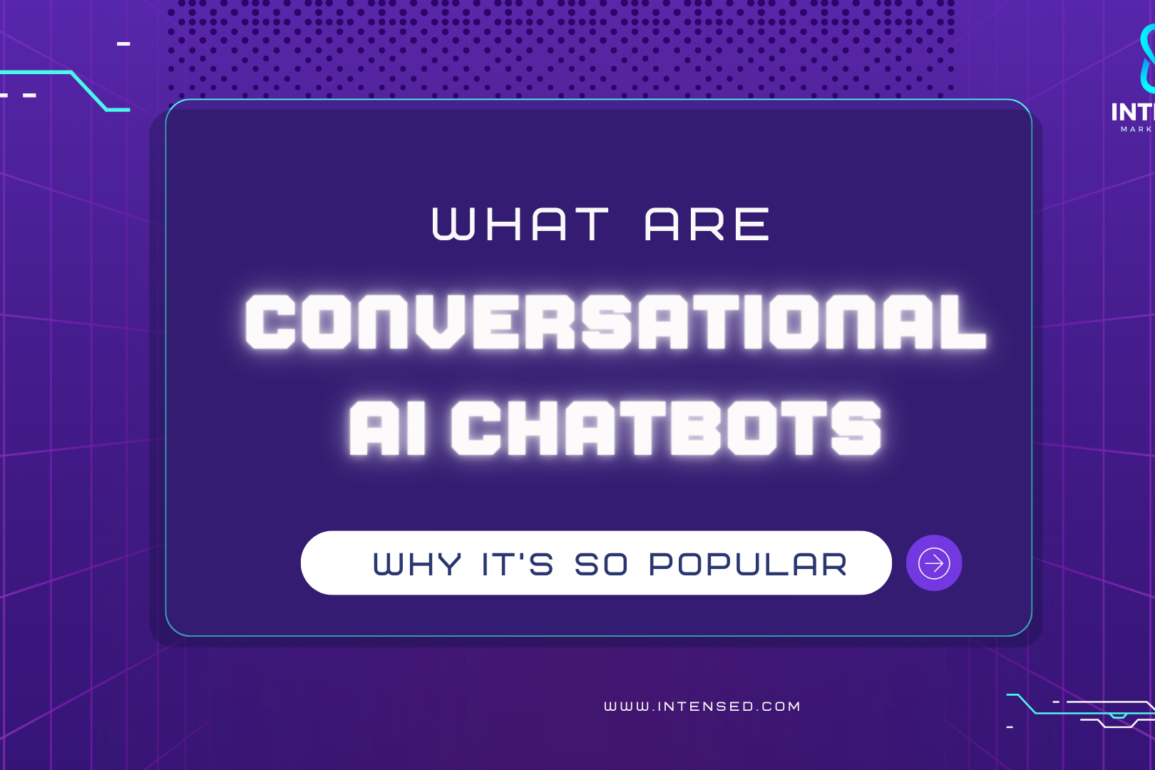Picture this: you visit a website, a friendly little chat window pops up, and you start typing away your questions as if talking to a real person. You get the answers you need without having to navigate through endless menus or wait on hold for ages.
Sounds convenient, right? That’s the power of conversational AI chatbots.
What are Conversational AI Chatbots?
A conversational AI chatbot is a software program powered by artificial intelligence that can conduct human-like conversations with users via text or voice interactions. Chatbots utilize natural language processing (NLP), machine learning, and natural language generation to understand user inputs and respond appropriately in a conversational format.
At their core, conversational AI chatbots aim to simulate human-to-human conversations using advanced AI technologies. They allow users to interact with computer systems much like they would with a real person – using natural language. This makes them more intuitive and user-friendly compared to traditional graphical user interfaces.
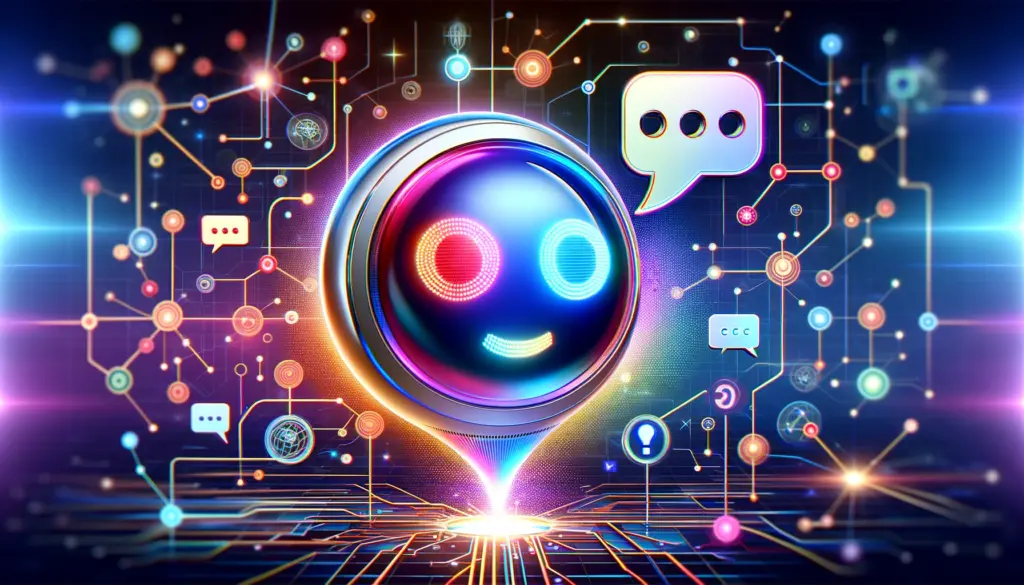
Let’s break it down:
- Conversational AI: This is the umbrella term covering the tech that lets computers hold human-like conversations. Think of it as your digital communications whiz.
- Chatbots: These are the programs that specialize in having text-based or voice conversations.
Key components and technologies that enable conversational AI chatbots include:
- Natural Language Processing (NLP) – Allows the chatbot to analyze and understand human language inputs. This includes intent recognition, entity extraction, sentiment analysis, etc.
- Machine Learning (ML) – Enables the chatbot to continuously improve its NLP capabilities through ongoing learning and pattern recognition from conversations.
- Automatic Speech Recognition (ASR) – For voice-based chatbots, this technology transcribes human speech into text that can be processed by the NLP system.
- Natural Language Generation (NLG) – Automatically constructs understandable and natural sounding responses based on the chatbot’s interpretation of the user input.
So in summary, a conversational AI chatbot leverages NLP and ML to understand free-form human inputs and respond appropriately using NLG – creating engaging, human-like conversations.

How Do Conversational AI Chatbots Work?
Conversational AI chatbots work by processing a structured conversation flow that matches user inputs to predefined responses and actions. Here is a high-level step-by-step breakdown:
- User input – The conversation starts with the user entering an input either via text chat or voice command.
- Input analysis – The chatbot’s NLU (natural language understanding) module analyzes the text to determine intent and extract entities. For voice, automatic speech recognition transcribes the audio into text.
- Response generation – Based on the interpreted user input, the chatbot’s dialogue manager selects the appropriate response from its knowledge base using NLG.
- Continuous learning – Behind the scenes, the chatbot further trains its ML models to improve understanding of language nuances through conversations over time.
So in a nutshell, users enter natural language inputs which the chatbot interprets using NLP and ML to determine appropriate responses through NLG – creating a dynamic, human-like conversation flow.
The chatbot also continuously learns from every interaction to improve its capabilities.
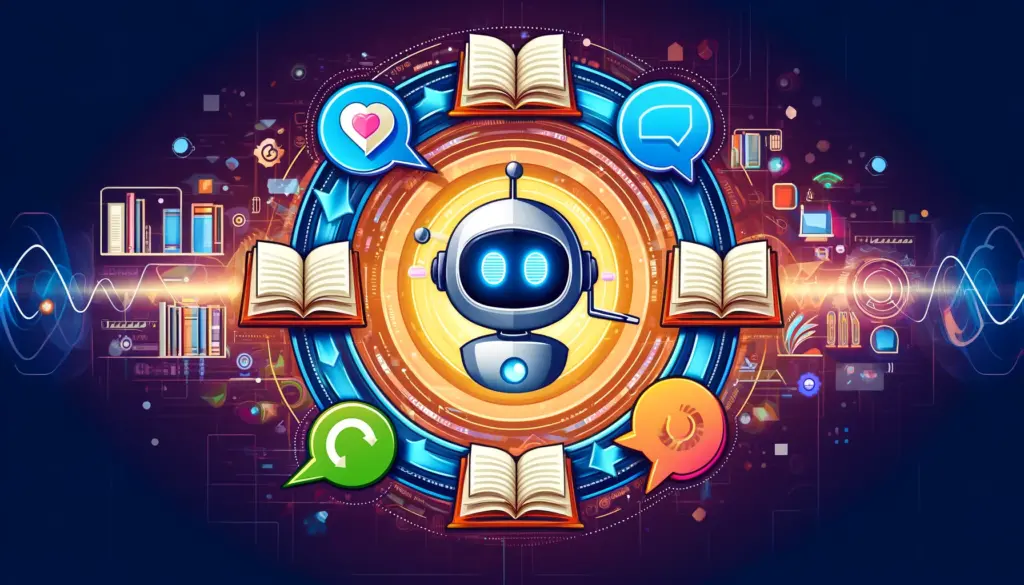
Types of Conversational AI Chatbots
Think of it like a spectrum, with simple, task-oriented bots on one end and super sophisticated virtual assistants on the other. Here’s a breakdown of some common types:
1. Chatbots
- The Basics: These are probably the type you’re familiar with. They can be either rule-based (following a pre-programmed script) or powered by more advanced AI.
- Best for: Simple tasks like answering FAQs, providing basic product info, or taking orders. Think of them as your helpful digital assistants for common requests.
2. Virtual Assistants
- Stepping it up: Virtual assistants like Siri, Alexa, and Google Assistant are more sophisticated conversational AI tools. They can understand complex commands and often connect to your smartphone or smart home devices, letting you do things like play music, set reminders, or control your lights by talking to them.
- Best for: Personal use to make daily life easier or for hands-free actions when you’re on the go.
3. Voice Assistants
- The power of speech: Similar to virtual assistants, but they specialize in voice interactions. These are becoming more common in customer service – think talking to a bot instead of pressing buttons on the phone!
- Best for: When typing may be inconvenient or impossible, or for users who prefer speaking rather than typing.
4. Text-to-Speech (TTS) Software
- Chatting with your ears: These tools take written text and transform it into spoken responses.
- Best for: People with visual impairments or for those who prefer to listen to information rather than read it.
So in essence, there are many sub-types of conversational AI chatbots tailored to different functionality, use cases and modes of conversation.
But they all leverage NLP and ML to create intuitive and useful conversational experiences.

Benefits of Conversational AI for Businesses
There are many valuable benefits driving business adoption of AI-powered conversational solutions:
24/7 availability – Chatbots enable businesses to offer customer assistance around the clock without human support overhead. Issues can be resolved anytime without staffing limitations.
Cost reduction – Conversational AI cuts customer support costs by automating common repetitive inquiries. This allows human agents to focus on higher value complex issues. According to Oracle, chatbots can save up to 50% in customer support costs.
Increased efficiency – Chatbots boost productivity in customer interactions by providing instant responses instead of waiting on support staff availability. Routine consumer requests are handled automatically, creating bandwidth for human agents.
Scalability – Conversational AI solutions easily scale to handle extremely high query volumes that would require prohibitively large (and expensive) human teams. Chatbots have no physical limits on the concurrent conversations supported.
Personalized experiences – Smart chatbots leverage historic customer data and context to provide tailored interactions for each individual, building stronger engagement. Real-time behavioral personalization drives loyalty.
Lead generation – Many businesses are using conversational AI chatbots to qualify promising sales prospects before handing over to human reps. They asking qualifying questions and routing strong leads accordingly.
So in summary, conversational AI delivers game-changing benefits spanning customer experience, operational efficiency, scale, cost savings and revenue generation. The ROI potential is driving rapid enterprise adoption.
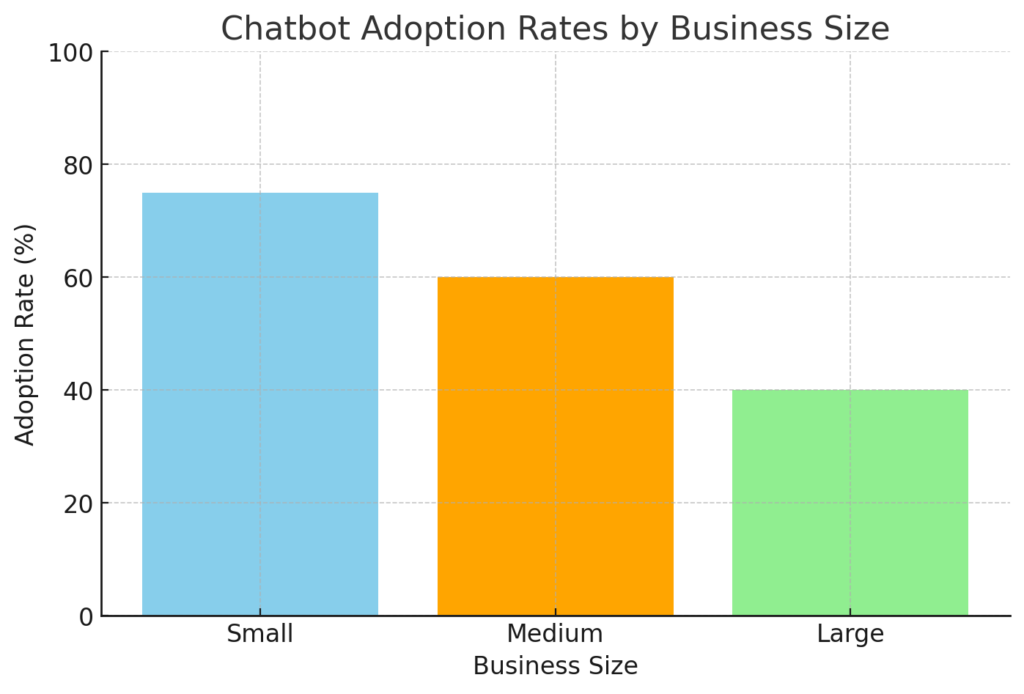
Stats Highlighting the Difference Chatbots can Make for Businesses:
- Customer Satisfaction:
- 67% of global consumers interacted with a chatbot in the past year, showcasing their growing popularity and acceptance.
- Chatbots can handle up to 80% of routine customer inquiries successfully. This frees your human agents to focus on complex issues.
- Cost Savings & Efficiency
- Chatbots can reduce customer service costs by up to 50%. That’s a huge saving!
- Businesses can save up to 2.5 billion hours of work by 2024 thanks to the assistance of chatbots.
- Sales & Marketing Impact:
- Future Forward Growth:
- The global conversational AI market is expected to grow to $29.8 billion by 2028, with a Compound Annual Growth Rate (CAGR) of 24%!
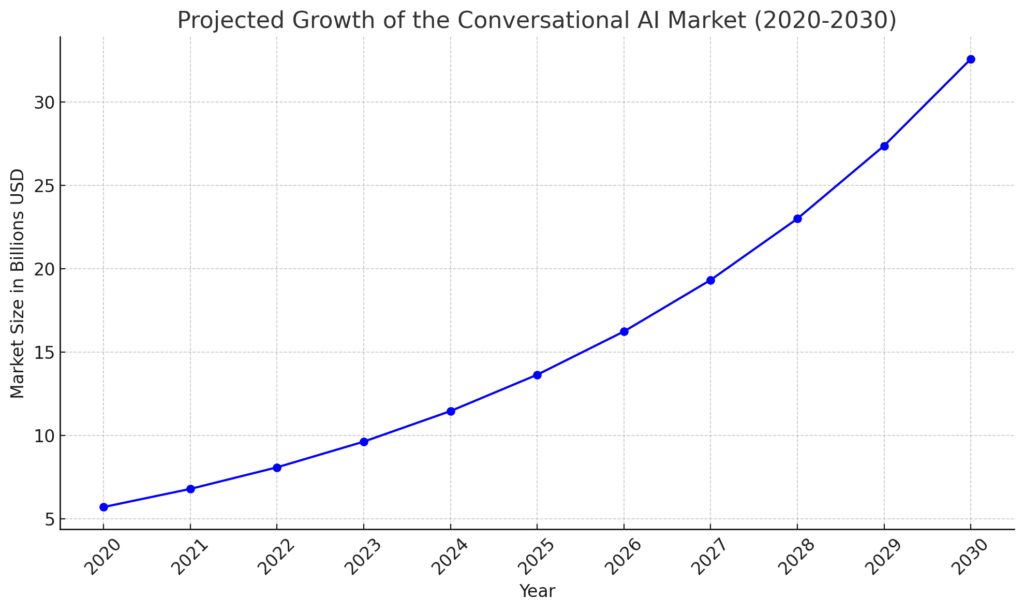
Remember, these are just a few examples, and the benefits of conversational AI will continue to grow as the technology advances. It’s worth exploring specific statistics relevant to your particular industry too!
Top Conversational AI Chatbot Platforms in 2024
Many technology vendors offer robust conversational AI platforms enabling businesses to quickly build intelligent chatbots. Here’s a quick comparison focusing on some of the key players to get you started:
1. ChatGPT
- Developer: OpenAI
- Strengths: Advanced language model with remarkable conversational abilities, can handle complex queries, provide creative text formats and even generate code! A major disruptor in the space.
- Best for: Businesses needing sophisticated content creation, advanced language understanding, or cutting-edge AI capabilities.
- Considerations: Still under development and might not be the best for very structured or rule-based tasks
2. Microsoft Copilot
- Developer: Microsoft
- Strengths: Deep integration with Microsoft suite (Word, Excel, Teams, Outlook), coding assistance, and leverages the power of the Bing search engine.
- Best for: Businesses already heavily invested in Microsoft products, looking for AI-powered productivity boosts, or for streamlining business processes.
- Considerations: May be less suitable for purely customer-facing chatbot applications outside of the Microsoft ecosystem.
- Developer: Google
- Strengths: Huge knowledge base from Google Search results, vast range of Google tools integration, advanced natural language understanding.
- Best for: Businesses wanting a reliable chatbot with access to the massive Google knowledge trove or for those who heavily use Google’s services.
- Considerations: Can be complex to set up for more niche use cases outside general knowledge or search-related queries.
4. Claude AI
- Developer: Anthropic
- Strengths: Strides in reliability and safety compared to earlier large language models, focuses on harmlessness and helpfulness in responses.
- Best for: Businesses needing a chat solution prioritizing safety and avoiding harmful or misleading outputs.
- Considerations: Still in development, may have limitations on certain creative tasks compared to some other platforms.
5. Perplexity AI
- Developer: Perplexity Inc.
- Strengths: Search engine style, but with natural language summaries and citations of sources, great for knowledge-based needs and research support.
- Best for: Businesses focused on providing accurate, well-cited information, or those involved in research-intensive fields.
- Considerations: May be less ideal for conversational experiences that require more personality or open-ended creativity.
Beyond these, many other niche players exist, catering to specific industries or use cases. Key Factors to Consider:
- Functionality: What specific tasks do you need your chatbot to handle?
- Ease of use: Will you need in-house developers, or do you prefer no-code platforms?
- Integration: How important is it for your chatbot to connect with your existing CRM, helpdesk, or other tools?
- Cost: Pricing models vary, from subscription-based to pay-per-use.
| Platform | Key Features | Pricing |
|---|---|---|
| ChatGPT | Generative AI for human-like conversations, integration with apps | Pricing TBD, limited beta access |
| Microsoft Copilot | Coding assistant chatbot with IntelliSense suggestions | Free public preview |
| Google Dialogflow | NLU/NLG, integrations, scaling | Starts at $0.002 per conversational turn |
| Claude.ai | No-code bot builder, live chat, analytics | Starter plan free up to 1,000 messages/month |
| Perplexity.ai | Advanced NLU with emotion/intent detection | Custom enterprise pricing |
So in summary, companies have many robust platforms to choose from when leveraging conversational AI, with options tailored to different needs and budgets. Competition and innovation is heating up in this space.
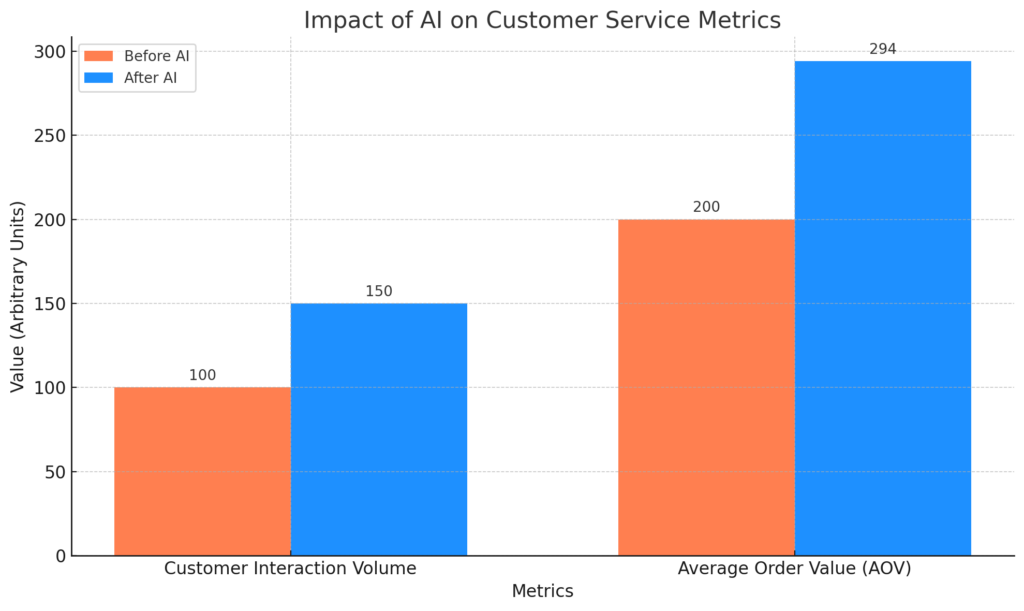
Use Cases and Examples of Conversational AI Chatbots
Conversational AI chatbots have demonstrated tremendous value across nearly every industry. Here are some of the most popular and impactful use cases:
1. Customer Service & Support
- Sephora: Their “Kik” chatbot on the messaging app helps customers find the perfect beauty products, providing recommendations and even offering virtual makeup try-ons.
- Hilton Hotels: Their chatbot “Connie” handles routine guest inquiries like booking reservations, finding locations, and answering questions about hotel amenities.
- Chatbots like SAP Conversational AI and Ada provide instant 24/7 support via messaging apps, websites and contact centers. They can handle common repetitive inquiries, reservations, lead qualification, payments and more.
2. E-commerce & Sales
- Lego: Their “Ralph the Gift Bot” on Facebook Messenger helps shoppers find the perfect gift, guiding them through the selection process in a fun and interactive way.
- 1-800-Flowers: Their chatbot assists customers with flower selection, order placement, and even tracks deliveries. It’s streamlined the buying process for both customers and the business.
- Retailers extensively use conversational bots to assist online shoppers. Chatbots like Mode.ai help users find products, get recommendations, complete purchases and track orders without human involvement.
3. Healthcare and Wellness
- Your.MD: This AI-powered health assistant app provides users with preliminary symptom checks, information on various health conditions, and guidance on when to seek professional medical advice.
- Babylon Health: Their chatbot offers 24/7 access to health consultations, triage, and symptom checks, reducing strain on in-person clinics.
- Patient intake, medical guidance and appointment booking are being automated by healthcare chatbots like Sense.ly and Orbita. They are improving care access while reducing administrative costs.
4. Education and Learning
- Duolingo: The popular language learning app features chatbots that guide learners through lessons, offer personalized practice, and provide engaging conversational exercises.
- Quizlet: Their chatbot helps students revise study materials, quizzing them in a fun, interactive way to make learning more efficient.
- Interactive tutoring bots like Jill Watson provide personalized learning assistance for students without overwhelming faculty. They leverage vast knowledge bases to adaptively enhance understanding.
5. HR and Recruiting
- Mya Systems: Their recruiting chatbot automates candidate screening, scheduling interviews, and answering common questions about job openings, saving recruiters time.
- Textio: Helps companies write more inclusive and unbiased job postings by using AI to analyze language and suggest improvements that attract a more diverse pool of applicants.
- Conversational AI streamlines key HR functions like scheduling interviews, screening applicants, onboarding new hires and answering common employee questions. This automation allows HR staff to focus on more strategic initiatives.
The conversational AI revolution is creating tremendous value across practically every industry through happier customers, greater efficiency and reduced costs. Continued technological progress will further expand use cases and real-world impact.
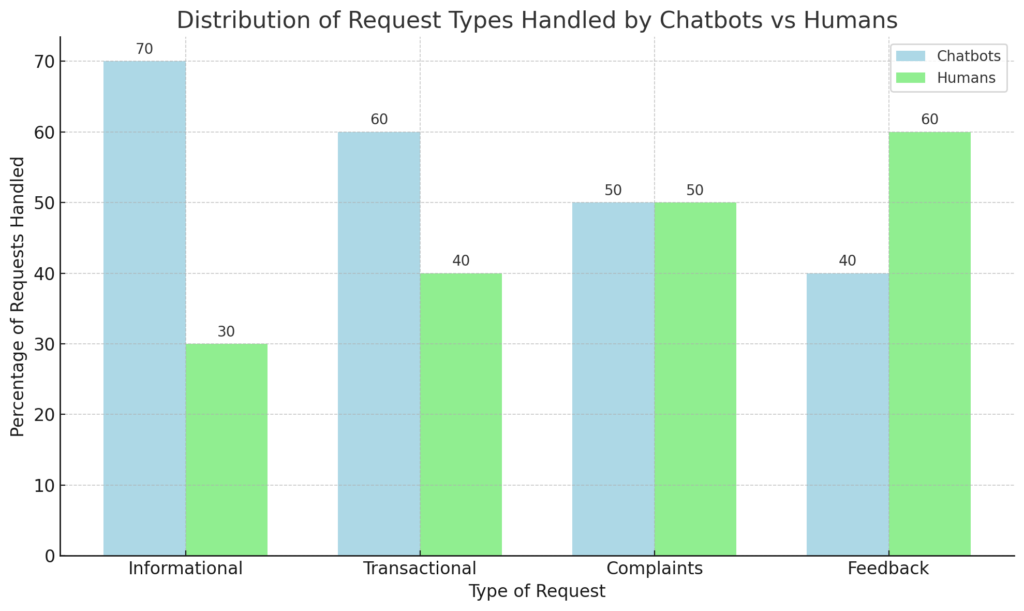
Implementing Conversational AI Chatbots
For businesses exploring conversational AI automation, here is a structured approach covering key phases:
1. Define Your Goals and Target Audience
- What do you want to achieve?: Are you aiming for better customer support, lead generation, data collection, or something else entirely? Clear objectives are crucial.
- Who’s your chatbot talking to? Understand your ideal customer’s demographics, pain points, communication style, and what level of technical knowledge they’re likely to have.
2. Choosing the Right Platform
- Think back to the top platforms we discussed. Which one aligns best with your goals, tech resources, and budget?
- Consider: Ease of use, flexibility, customization options, and how well it integrates with your existing software and business processes.
3. Designing Conversational Flows
- Map it out: Sketch out potential conversations – start simple and branch out. Think about happy paths (when everything goes smoothly) and how to gracefully handle misunderstandings.
- Keep it human: Aim for natural language patterns, break up long blocks of text, and consider adding a touch of personality that aligns with your brand voice.
- Provide options: Use buttons, quick replies, and menus to guide users when appropriate, but don’t over-rely on them.
4. Training and Optimizing Your Chatbot
- Start with the basics: Feed your chatbot quality data like your FAQs, knowledge base, or previous customer service transcripts.
- User feedback is key: Implement mechanisms to get feedback on whether your chatbot is helpful. This helps you continuously improve its responses.
- Don’t forget: Just like any tool, chatbots need maintenance and refinement over time to stay effective.
5. Integrating with Existing Systems
- Synergy: Think about your CRM (Customer Relationship Management), helpdesk software, or other tools. Seamless integration makes your chatbot even more powerful.
- APIs to the rescue: Most chatbot platforms offer APIs (Application Programming Interfaces) to help make these connections.
6. Measure Success
- Define your metrics: Are you looking to reduce call volume, increase conversions, or boost customer satisfaction scores?
- Set benchmarks: Compare before and after you launch your chatbot to get a true picture of its impact.
- Analyze and adjust: Track user interactions, drop-off points, and feedback to spot areas for improvement.
So in summary, thoughtfully evaluating your needs, design requirements and target users is crucial before selecting a platform. Build out conversational content iteratively with extensive real user testing and data-driven optimization to maximize effectiveness and ROI.
Important: Implementing a conversational AI chatbot is an ongoing process, not a one-and-done task. Be adaptable and refine your approach as your goals evolve and the technology continues to advance.

The Future of Conversational AI
While conversational AI has already demonstrated tremendous progress and real-world business impact, we are still just scratching the surface of its disruptive potential.
Here are some exciting emerging capabilities we can expect in the next few years:
Multimodal Conversations – Chatbots will combine voice, text, images and AR/VR to enable richer and more natural interactions. For example, users could verbally ask to see product images/videos or try on digital clothes.
Hyper-Personalization – Increased integration of customer data from CRM systems, IoT sensors and more will allow chatbots to recognize individuals and tailor highly specific responses and recommendations to them.
Emotion & Empathy – Next-generation chatbots like Replika will perceive user emotions through vocal analysis and language, exhibiting understanding and compassion. This emotional intelligence deepens human connection.
Proactive Engagement – Instead of purely responding to user prompts, chatbots will proactively message users with personalized content and suggestions based on contextual signals like location, past behaviors and predictive analytics.
New Interaction Channels – Chatbots will expand from websites/apps into new engagement channels like messaging platforms, smart speakers, connected devices and even email. Users will converse with them across platforms and contexts.
Assistants for Complex Tasks – AI assistants will guide users through increasingly complicated processes providing coaching, recommendations and automation along the way – spanning research, planning, transactions and more.
Conversational AI solutions will transform customer engagement, business operations and how we interact with technology overall thanks to steady progress in language understanding, personalization and proactive capabilities.
Potential Impact on Industries
- Revamped healthcare: Chatbots could offer initial consultations, support mental health, and monitor patients remotely, easing the burden on healthcare professionals.
- Hyper-personalized retail: Virtual shopping assistants become your style gurus, knowing your tastes, sizes, and even suggesting outfits for special occasions.
- Revolutionized education: AI tutors provide adaptive learning experiences, offering custom lesson plans, and answering questions in real-time around the clock.

Challenges and Ethical Considerations
- The bias problem: It’s vital to address potential biases in AI training data to ensure chatbots provide fair and unbiased interactions for everyone.
- Data privacy: Strict data handling and transparency are crucial to building trust in conversational AI.
- Discerning bots from humans: As bots become more sophisticated, labeling them clearly will be necessary to avoid deception.
Conclusion
- Conversational AI represents one of the most profound innovations shaping the digital landscape today. Chatbots and virtual assistants are fundamentally reinventing customer experiences and business operations through intuitive voice and text conversations powered by artificial intelligence.
- Leading platforms like Microsoft Copilot and Google Dialogflow combine robust natural language capabilities with enterprise scale, security and extensibility. This allows businesses to deploy smart self-service applications spanning use cases from customer support to HR and more.
- Real-world benefits range from 24/7 availability and extreme scalability to personalized engagement as well as major cost savings from reduced human support requirements. Conversational AI drives revenue growth while cutting expenses.
- Over the next few years, chatbots will continue to expand into new domains and channels thanks to advances in emotion detection, predictive analytics, multimodal interactions and more. Virtually every industry will feel their transformational impact as adoption accelerates.
So in summary, conversational AI represents an immensely valuable opportunity for businesses today – offering improved customer experiences, unlocked efficiencies and sustained competitive advantage into the future through increasingly human-like and proactive intelligent assistants. The time to embrace this revolution is now.
Most Popular Questions
What are the main benefits of conversational AI chatbots?
Chatbots offer 24/7 availability, scalability, cost savings, personalized service, and lead gen. They boost CX and efficiency via intelligent automation.
How are conversational AI chatbots built?
They’re built using NLP, ML and NLG to understand language, continuously learn from interactions, and respond appropriately using human-like dialogue.
What makes conversational AI interactions feel more human?
Capabilities like sentiment analysis, personality modeling, empathy, and use of slang/idioms help chatbots converse casually and emotionally like humans.
What are some leading enterprise conversational AI platforms?
Top solutions include Google Dialogflow, Microsoft Bot Framework, IBM Watson Assistant, Amazon Lex, and SAP Conversational AI. They offer robust NLP plus enterprise scale and security.
What are some common use cases for chatbots?
Popular applications span customer service, e-commerce shopping, appointment booking, HR tasks like recruitment and onboarding, personalized recommendations, and interactive learning.
How do you measure the performance of conversational AI chatbots?
Key analytics include containment rate, CSAT, intents matched, entities extracted, escalations, resolution rate per intent, and sentiment trends over time.
How can businesses optimize their chatbots?
Optimize via ongoing content additions, retraining ML models as needed, analyzing conversational analytics to address dialogue gaps, expanding to new channels, and A/B testing responses.
What ethical considerations exist around conversational AI?
Key issues include transparency on bot identity, privacy protections, responsible handling of sensitive contexts, and monitoring for harmful recommendations or biases.
What security measures support enterprise conversational AI?
Authentication, access controls, data encryption, platform vetting, vulnerability testing, and compliance with regulations like HIPAA safeguard institutional use cases.
What’s driving recent surges in conversational AI adoption?
Expanding use cases across industries plus major leaps in natural language understanding fueled by innovations like generative AI models and multimodal learning.
What does the future look like for conversational AI chatbots?
Over the next decade, we’ll see emotion-aware bots along with hyper-personalization, predictive capabilities, expanded modalities like AR/VR, and automated complex task support.
How can businesses get started with conversational AI?
Identify high opportunity CX journeys and use cases. Vet leading vendor platforms against security and scalability needs. Design, build and rigorously test chatbot dialog flows with real users. Analyze performance data and continuously optimize.
